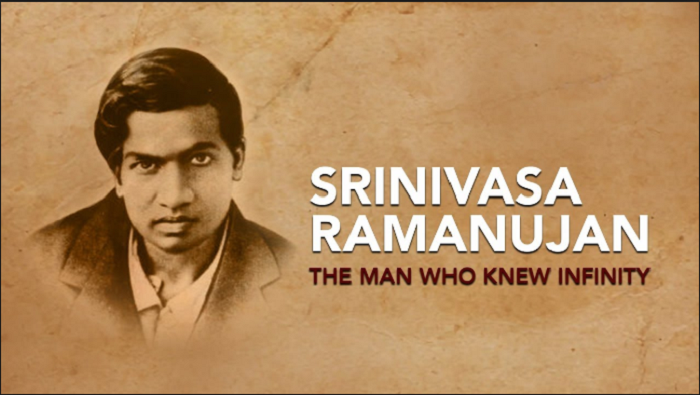#NationalMathematicsDay: Man with vision for infinity and beyond

December 22: India is celebrating 131st birth anniversary of the great mathematician Srinivasa Ramanujan today. Ramanujan, who lived during the British Rule in India, is known for his great contributions in the field of mathematics. December 22 was declared as National Mathematics Day in 2012 by the Indian government.
Srinivasa Ramanujan was one of the world’s greatest mathematicians. His life story, with its humble and sometimes difficult beginnings, is as interesting in its own right as his astonishing work was. He was born on December 22, 1887 in Erode, Tamil Nadu and died at a very early age of 32 on April 26, 1920.
Though he had almost no formal training in pure mathematics, Ramanujan made substantial contributions to mathematical analysis, number theory, infinite series, and continued fractions, including solutions to mathematical problems considered to be unsolvable.
Ramanujan gained interest in the field of mathematics when he first encountered the book containing Synopsis of Elementary Results in Pure and Applied Mathematics by George Shoobridge Carr in 1903 when he was 15 years old. Since the book was not an orderly procession of theorems all tied up with tidy proofs, encouraged Ramanujan to jump in and make connections on his own.
Despite being a prodigy in mathematics, Ramanujan did not have an auspicious start to his career. He obtained a scholarship to college in 1904, but he quickly lost it by failing in nonmathematical subjects. He drifted through poverty until in 1910 when he got an interview with R. Ramachandra Rao, the secretary of the Indian Mathematical Society who was at first doubtful about Ramanujan but eventually recognized his ability and supported him financially.
In 1913, a correspondence between Ramanujan and G. H. Hardy, a professor at the University of Cambridge began that culminated in Ramanujan going to study under Hardy in 1914.
The two mathematicians together made a discovery that is known as the Hardy-Ramanujan number or the “taxicab number”. In a famous anecdote, when Hardy took a cab to visit Ramanujan, he told Ramanujan that the cab’s number, 1729, was “rather a dull one.” Ramanujan denied it by stating that it indeed is the smallest number expressible as a sum of two cubes in two different ways. That is, 1729 = 1^3 + 12^3 = 9^3 + 10^3.
Both also worked on new asymptotic formula that gave rise to method of analytical number theory also called as “Circle Method” in mathematics.
It was after his first publication in the “Journal of the Indian Mathematical Society” that he gained recognition as genius mathematician. In his notebooks, Ramanujan wrote down 17 ways to represent 1/pi as an infinite series. Series representations have been known for centuries. He also achieved the distinction of becoming second Indian, who was elected as Fellow of Royal Society of London in 1918.
When he died in 1920 at the age of 32, Ramanujan left behind three notebooks and a sheaf of papers which contained thousands of results that are still inspiring mathematical work decades later.
In 2012, marking 125th birth anniversary of this genius mathematician, the former PM of India, Manmohan Singh, announced December 22 as India’s National Mathematics Day. Since then, this day is celebrated with numerous educational events held at schools and universities throughout the country. In 2017, the day's significance was enhanced by the opening of the Ramanujan Math Park in Kuppam, in Chittoor, Andhra Pradesh.
